US Airways 2008 Annual Report Download - page 8
Download and view the complete annual report
Please find page 8 of the 2008 US Airways annual report below. You can navigate through the pages in the report by either clicking on the pages listed below, or by using the keyword search tool below to find specific information within the annual report.-
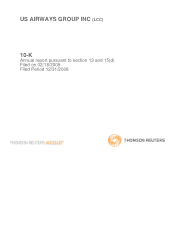 1
1 -
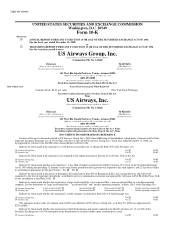 2
2 -
 3
3 -
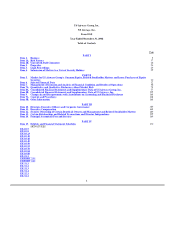 4
4 -
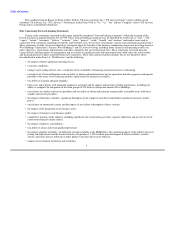 5
5 -
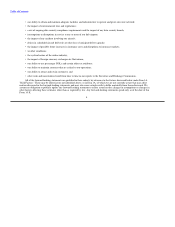 6
6 -
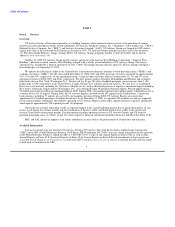 7
7 -
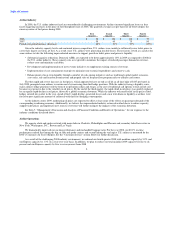 8
8 -
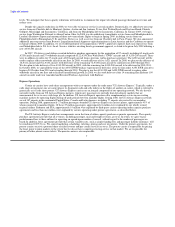 9
9 -
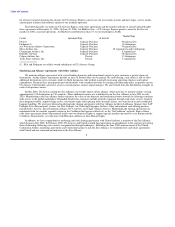 10
10 -
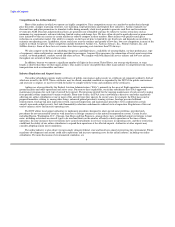 11
11 -
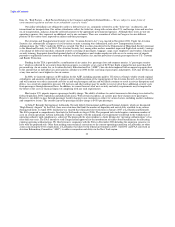 12
12 -
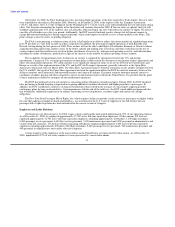 13
13 -
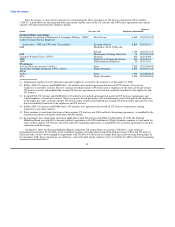 14
14 -
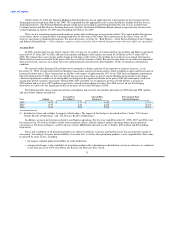 15
15 -
 16
16 -
 17
17 -
 18
18 -
 19
19 -
 20
20 -
 21
21 -
 22
22 -
 23
23 -
 24
24 -
 25
25 -
 26
26 -
 27
27 -
 28
28 -
 29
29 -
 30
30 -
 31
31 -
 32
32 -
 33
33 -
 34
34 -
 35
35 -
 36
36 -
 37
37 -
 38
38 -
 39
39 -
 40
40 -
 41
41 -
 42
42 -
 43
43 -
 44
44 -
 45
45 -
 46
46 -
 47
47 -
 48
48 -
 49
49 -
 50
50 -
 51
51 -
 52
52 -
 53
53 -
 54
54 -
 55
55 -
 56
56 -
 57
57 -
 58
58 -
 59
59 -
 60
60 -
 61
61 -
 62
62 -
 63
63 -
 64
64 -
 65
65 -
 66
66 -
 67
67 -
 68
68 -
 69
69 -
 70
70 -
 71
71 -
 72
72 -
 73
73 -
 74
74 -
 75
75 -
 76
76 -
 77
77 -
 78
78 -
 79
79 -
 80
80 -
 81
81 -
 82
82 -
 83
83 -
 84
84 -
 85
85 -
 86
86 -
 87
87 -
 88
88 -
 89
89 -
 90
90 -
 91
91 -
 92
92 -
 93
93 -
 94
94 -
 95
95 -
 96
96 -
 97
97 -
 98
98 -
 99
99 -
 100
100 -
 101
101 -
 102
102 -
 103
103 -
 104
104 -
 105
105 -
 106
106 -
 107
107 -
 108
108 -
 109
109 -
 110
110 -
 111
111 -
 112
112 -
 113
113 -
 114
114 -
 115
115 -
 116
116 -
 117
117 -
 118
118 -
 119
119 -
 120
120 -
 121
121 -
 122
122 -
 123
123 -
 124
124 -
 125
125 -
 126
126 -
 127
127 -
 128
128 -
 129
129 -
 130
130 -
 131
131 -
 132
132 -
 133
133 -
 134
134 -
 135
135 -
 136
136 -
 137
137 -
 138
138 -
 139
139 -
 140
140 -
 141
141 -
 142
142 -
 143
143 -
 144
144 -
 145
145 -
 146
146 -
 147
147 -
 148
148 -
 149
149 -
 150
150 -
 151
151 -
 152
152 -
 153
153 -
 154
154 -
 155
155 -
 156
156 -
 157
157 -
 158
158 -
 159
159 -
 160
160 -
 161
161 -
 162
162 -
 163
163 -
 164
164 -
 165
165 -
 166
166 -
 167
167 -
 168
168 -
 169
169 -
 170
170 -
 171
171 -
 172
172 -
 173
173 -
 174
174 -
 175
175 -
 176
176 -
 177
177 -
 178
178 -
 179
179 -
 180
180 -
 181
181 -
 182
182 -
 183
183 -
 184
184 -
 185
185 -
 186
186 -
 187
187 -
 188
188 -
 189
189 -
 190
190 -
 191
191 -
 192
192 -
 193
193 -
 194
194 -
 195
195 -
 196
196 -
 197
197 -
 198
198 -
 199
199 -
 200
200 -
 201
201 -
 202
202 -
 203
203 -
 204
204 -
 205
205 -
 206
206 -
 207
207 -
 208
208 -
 209
209 -
 210
210 -
 211
211 -
 212
212 -
 213
213 -
 214
214 -
 215
215 -
 216
216 -
 217
217 -
 218
218 -
 219
219 -
 220
220 -
 221
221 -
 222
222 -
 223
223 -
 224
224 -
 225
225 -
 226
226 -
 227
227 -
 228
228 -
 229
229 -
 230
230 -
 231
231 -
 232
232 -
 233
233 -
 234
234 -
 235
235 -
 236
236 -
 237
237 -
 238
238 -
 239
239 -
 240
240 -
 241
241 -
 242
242 -
 243
243 -
 244
244 -
 245
245 -
 246
246 -
 247
247 -
 248
248 -
 249
249 -
 250
250 -
 251
251 -
 252
252 -
 253
253 -
 254
254 -
 255
255 -
 256
256 -
 257
257 -
 258
258 -
 259
259 -
 260
260 -
 261
261 -
 262
262 -
 263
263 -
 264
264 -
 265
265 -
 266
266 -
 267
267 -
 268
268 -
 269
269 -
 270
270 -
 271
271 -
 272
272 -
 273
273 -
 274
274 -
 275
275 -
 276
276 -
 277
277 -
 278
278 -
 279
279 -
 280
280 -
 281
281 -
 282
282 -
 283
283 -
 284
284 -
 285
285 -
 286
286 -
 287
287 -
 288
288 -
 289
289 -
 290
290 -
 291
291 -
 292
292 -
 293
293 -
 294
294 -
 295
295 -
 296
296 -
 297
297 -
 298
298 -
 299
299 -
 300
300 -
 301
301 -
 302
302 -
 303
303 -
 304
304 -
 305
305 -
 306
306 -
 307
307 -
 308
308 -
 309
309 -
 310
310 -
 311
311 -
 312
312 -
 313
313 -
 314
314 -
 315
315 -
 316
316 -
 317
317 -
 318
318 -
 319
319 -
 320
320 -
 321
321 -
 322
322 -
 323
323 -
 324
324 -
 325
325 -
 326
326 -
 327
327 -
 328
328 -
 329
329 -
 330
330 -
 331
331 -
 332
332 -
 333
333 -
 334
334 -
 335
335 -
 336
336 -
 337
337 -
 338
338 -
 339
339 -
 340
340 -
 341
341 -
 342
342 -
 343
343 -
 344
344 -
 345
345 -
 346
346 -
 347
347 -
 348
348 -
 349
349 -
 350
350 -
 351
351 -
 352
352 -
 353
353 -
 354
354 -
 355
355 -
 356
356 -
 357
357 -
 358
358 -
 359
359 -
 360
360 -
 361
361 -
 362
362 -
 363
363 -
 364
364 -
 365
365 -
 366
366 -
 367
367 -
 368
368 -
 369
369 -
 370
370 -
 371
371 -
 372
372 -
 373
373 -
 374
374 -
 375
375 -
 376
376 -
 377
377 -
 378
378 -
 379
379 -
 380
380 -
 381
381 -
 382
382 -
 383
383 -
 384
384 -
 385
385 -
 386
386 -
 387
387 -
 388
388 -
 389
389 -
 390
390 -
 391
391 -
 392
392 -
 393
393 -
 394
394 -
 395
395 -
 396
396 -
 397
397 -
 398
398 -
 399
399 -
 400
400 -
 401
401
 |
 |

Table of Contents
Airline Industry
In 2008, the U.S. airline industry faced an extraordinarily challenging environment. Airlines incurred significant losses as they
faced staggering increases in the price of fuel throughout most of 2008. The quarterly average cost per barrel of oil below depicts the
runaway nature of fuel prices during 2008:
First Second Third Fourth
Quarter Quarter Quarter Quarter
2008 $ 98 $ 124 $ 118 $ 59
2007 58 65 75 90
Period over period increase (decrease) 68% 91% 57% (35%)
Given the industry capacity levels and continued intense competition, U.S. airlines were unable to sufficiently raise ticket prices to
cover their largest cost item, jet fuel. As a result, most U.S. airlines were generating sizeable losses. These factors served as a catalyst for
some airlines to take the following unprecedented measures to support growth in ticket prices and preserve liquidity:
• Substantial capacity reductions. Domestic ASMs are expected to be down approximately 10% in 2009 as compared to 2008 for
the U.S. airline industry. These capacity cuts are expected to minimize the impact of reduced passenger demand on revenue,
reduce costs and minimize cash burn.
• Development and implementation of new revenue initiatives to supplement existing sources of revenue.
• Implementation of cost containment strategies to minimize non-essential expenditures and conserve cash.
• Enhancement of near-term liquidity through a number of cash-raising initiatives such as traditional capital market issuances,
asset sales, sale and leaseback transactions and prepaid sales of frequent flyer program miles to affinity card issuers.
The then rapid and severe increases in fuel prices, which appeared to have no end as oil hit an all time high of $147 per barrel in
July 2008, prompted some airlines to contain costs by increasing their fuel hedge positions. With the industry facing a liquidity crisis,
many airlines' hedge positions took the form of no premium collars and swaps, as the cost of traditional call options to lock in fuel cost
became too expensive due to the volatility in oil prices. By the end of the third quarter, the rapid climb in oil prices was quickly replaced
by an equally rapid decline in oil prices, driven by a global economic downturn. While the industry welcomed relief in the price of fuel,
hedges entered into earlier in the year, ahead of fuel's rapid decline, generated losses and a near term drain on liquidity as airlines were
forced to post significant amounts of collateral with their fuel hedging counterparties.
As the industry enters 2009, moderating oil prices are expected to offset at least some of the effects on passenger demand of the
corresponding weakening economy. Additionally, we believe the unprecedented industry actions described above to reduce capacity,
support ticket prices and implement new sources of revenue will further mitigate the impacts of the economic downturn.
See Item 7, "Management's Discussion and Analysis of Financial Condition and Results of Operations," for our response to the
industry conditions discussed above.
Airline Operations
We operate a hub-and-spoke network with major hubs in Charlotte, Philadelphia and Phoenix and secondary hubs/focus cities in
New York, Washington, D.C., Boston and Las Vegas.
We dramatically improved our on-time performance and mishandled baggage ratio. For the year 2008, our 80.1% on-time
performance ranked first among the big six hub and spoke carriers and second among the ten largest U.S. airlines as measured by the
DOT's Consumer Air Travel Report. See the "Customer Service" section below for further discussion.
As a result of the challenging 2008 industry environment, we reduced our fourth quarter 2008 total mainline capacity by 5.9% and
our Express capacity by 1.3% on a year-over-year basis. In addition, we plan to reduce our total mainline 2009 capacity by four to six
percent and our Express capacity by five to seven percent from 2008
6
